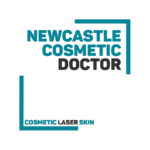Service: Fotona SP Dynamis (Er:YAG 2940 nm / Nd:YAG 1064 nm) & StarWalker MaQX (QS 1064/532 nm ± dye 585/650 nm).
Cause / Mechanism
Laser plume (surgical smoke) is generated when high‑energy beams ablate or thermally damage tissue, creating an aerosol of water vapour, cellular debris, viable microorganisms (HPV, HBV, bacteria), volatile organic compounds and carcinogens. Nd:YAG and Er:YAG generate plume during resurfacing, ablation and coagulation. Prolonged exposure without evacuation increases occupational risk. 1 2 3
Risk Factors
- Procedure: ablative resurfacing, wart/HPV ablation, large field treatments.
- Patient: HPV lesions, viral warts, infectious dermatoses.
- Environment: absent/poor local plume evacuation, inadequate ventilation.
- Staff: lack of fit‑tested respirator, not using protective eyewear, prolonged exposure. 1 4 5
Signs & Symptoms
- Acute: unpleasant odour, throat/eye irritation, headache, nausea among staff.
- Chronic (prolonged exposure): theoretical increased risk of respiratory disease and malignancy due to carcinogenic compounds. 2 3
Prevention
- Mandatory local smoke/plume evacuator with ULPA + activated carbon filters; nozzle within 2–5 cm of source. 1 5
- Regular filter changes as per manufacturer schedule; document in log.
- Fit‑tested P2/N95 or higher respirator for staff when plume load high (per AS/NZS 1715). 4
- Protective eyewear to prevent conjunctival irritation.
- Training and annual refresher in plume hazards; signage in laser room. 1 4
Management Protocol
Immediate Actions (if staff exposed or symptomatic):
- Remove staff from exposure; move to fresh air.
- Assess symptoms: if ocular irritation, flush with sterile saline; if respiratory irritation, provide supportive care and oxygen if required. 2
- Document exposure incident and notify Laser Safety Officer.
- Inspect plume evacuation system for failure (filters, suction power, nozzle distance). 5
Ongoing Management:
- Staff with persistent respiratory or ocular symptoms → GP/occupational health review.
- Record incident in clinic risk register; review adequacy of engineering controls.
- If multiple incidents occur, escalate to WHS committee and consider ventilation assessment. 1 4
Follow‑up & Documentation
- Record exposure, symptoms, duration, procedure type, plume controls in place.
- Complete incident form; review controls and retrain staff if breach identified.
- Maintain filter change log and respirator fit‑testing records.
- Incorporate plume monitoring into annual WHS audit. 1 4
Sources
- NSW Health (2023), GL2023_018: Controlling Exposure to Surgical Plume, NSW Health, viewed 7 October 2025, https://www.health.nsw.gov.au ↩︎
- WorkSafe Victoria (2023), Managing surgical plume exposure in healthcare, WorkSafe Victoria, viewed 7 October 2025, https://www.worksafe.vic.gov.au ↩︎
- WA Country Health Service (2023), Surgical Smoke/Plume Procedure, Government of Western Australia, viewed 7 October 2025, https://www.wacountry.health.wa.gov.au ↩︎
- Standards Australia / Standards New Zealand (2009), AS/NZS 1715: Selection, use and maintenance of respiratory protective equipment, Standards Australia / Standards New Zealand, viewed 7 October 2025, https://store.standards.org.au/product/as-nzs-1715-2009 ↩︎
- Bravura Education (2023), Why every operating theatre should be smoke-free, Bravura Education, viewed 7 October 2025, https://www.bravura.edu.au ↩︎


